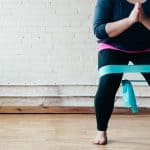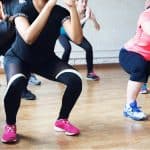Quick overview of yoga origins
No discussion of mind-body techniques would be complete without mention of yoga, the ancient Indian philosophy of living that includes physical postures, breathing techniques, meditation, relaxation, moral codes and other practices. Together, these practices provide a path to self-realization.
Although their roots and practices are intertwined, there are two main philosophical branches in yoga – Hatha (to do with the physical and energetic body) and Raja (known as the eight-fold path, or the path of meditation). Each of these branches offers a method by which we can come to better understand who we really are and what our life purpose is. In practice, practitioners blend these philosophies into one that is just right for us.
Sometimes these blends become popular ‘styles’ of yoga, such as Iyengar, which focuses on correct postural alignment; Ashtanga, which emphasizes dynamic, flowing sequences; Satyananda, a contemporary, classical, integrated form of yoga; Bikram, a sequence of postures practiced in a heated room; and Kundalini, which focuses on the movement of energy.
The practice of yoga
In the West, a yoga class commonly involves a blend of three practices, mostly asana (postures) and pranayama (breathing techniques), which are stepping stones to acquiring the physical and mental discipline needed to practice the third component, meditation, effectively.
There is good evidence that repeated and sustained yoga has a range of beneficial effects on health and wellbeing, from lowering blood pressure and stress levels to improving sleep and mood. The trick is to find what works for you and stick at it. Attending a yoga class can also increase social contact and provide an increased sense of meaning or spirituality.
Easy breathing techniques
- Breathe in slowly and deeply through your nose, concentrating on the diaphragm. The aim is to feel your abdomen rise, not your chest. Feel it rise as you inhale and fall as you exhale. The key is to observe, rather than to engage your thoughts. Keep returning your focus to your breathing.
- When your breathing speeds up, slow it down by extending the duration of your exhalation (anywhere from one-third to double your inhalation time). Relax your body, especially the stomach and abdomen, allowing it to swell outward and relax back inward, or follow the stream of breath from the moment of inhalation until you have fully exhaled.
- Posture is also important: if you slump forward, your diaphragm cannot move freely. It also helps to close your eyes and lie on your back with your arms at your sides, palms upward. If you’re sitting, place your feet flat on the floor. After several minutes of practice, you can move to any comfortable position and continue ‘mindful’ breathing.
- Each time you inhale, take in as much breath as you think is possible through your nostrils, then a little more. Pause for a moment before you exhale. Exhale gently and slowly through your mouth, emptying your lungs as much as you can, then a little more! As you exhale, purse your lips to create a slight resistance to the flow of air, and enhance your awareness of this airflow.
- Each time you practice your breathing, you are stretching and exercising your diaphragm muscle, which is essential for better breathing. A ‘breath pacer’ can sometimes be helpful initially to guide your efforts, until it becomes natural to breathe in a smooth and regular fashion.
Last Reviewed 02/Mar/2014
Dr Merlin Thomas
Latest posts by Dr Merlin Thomas (see all)
- How to increase DHEA levels - 28/09/17
- Testosterone supplement benefits & risks - 11/07/17
- Health effects of tea & coffee - 10/07/17






